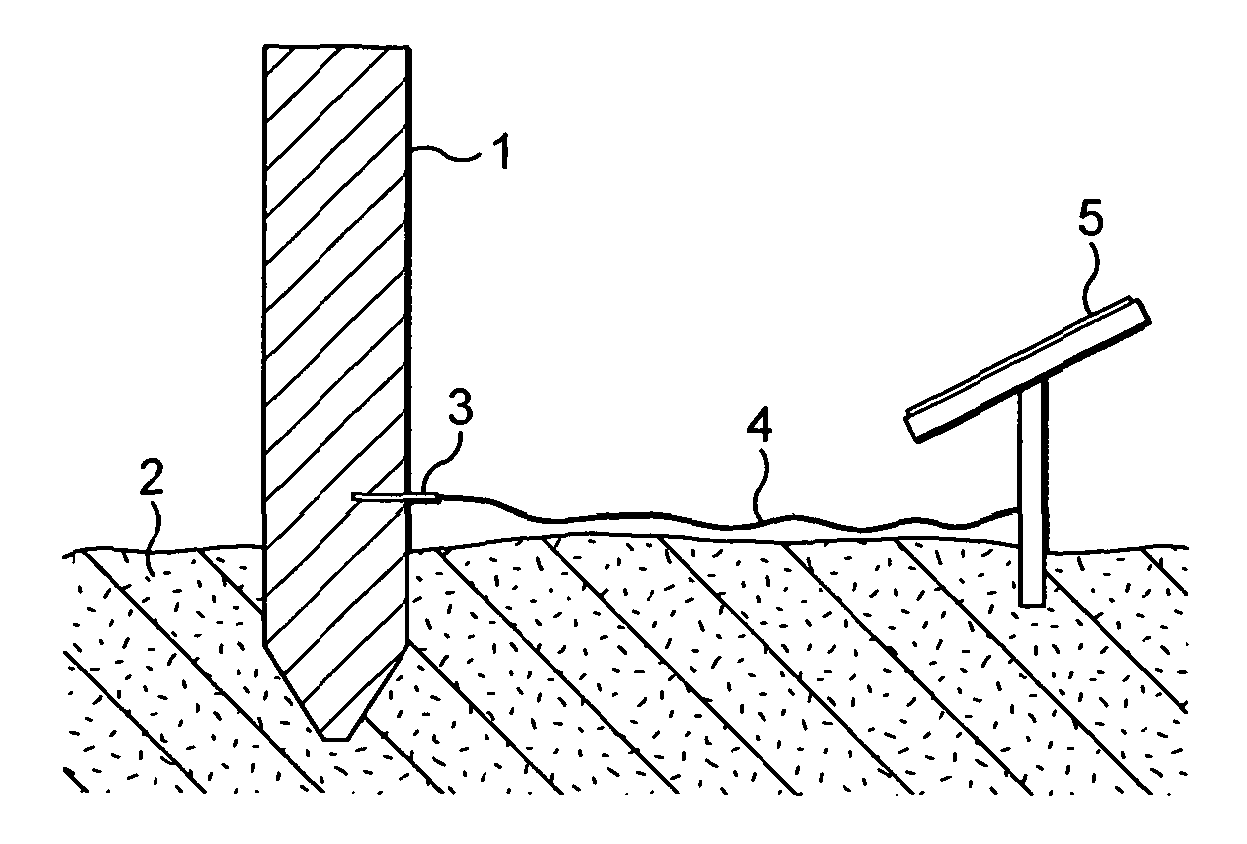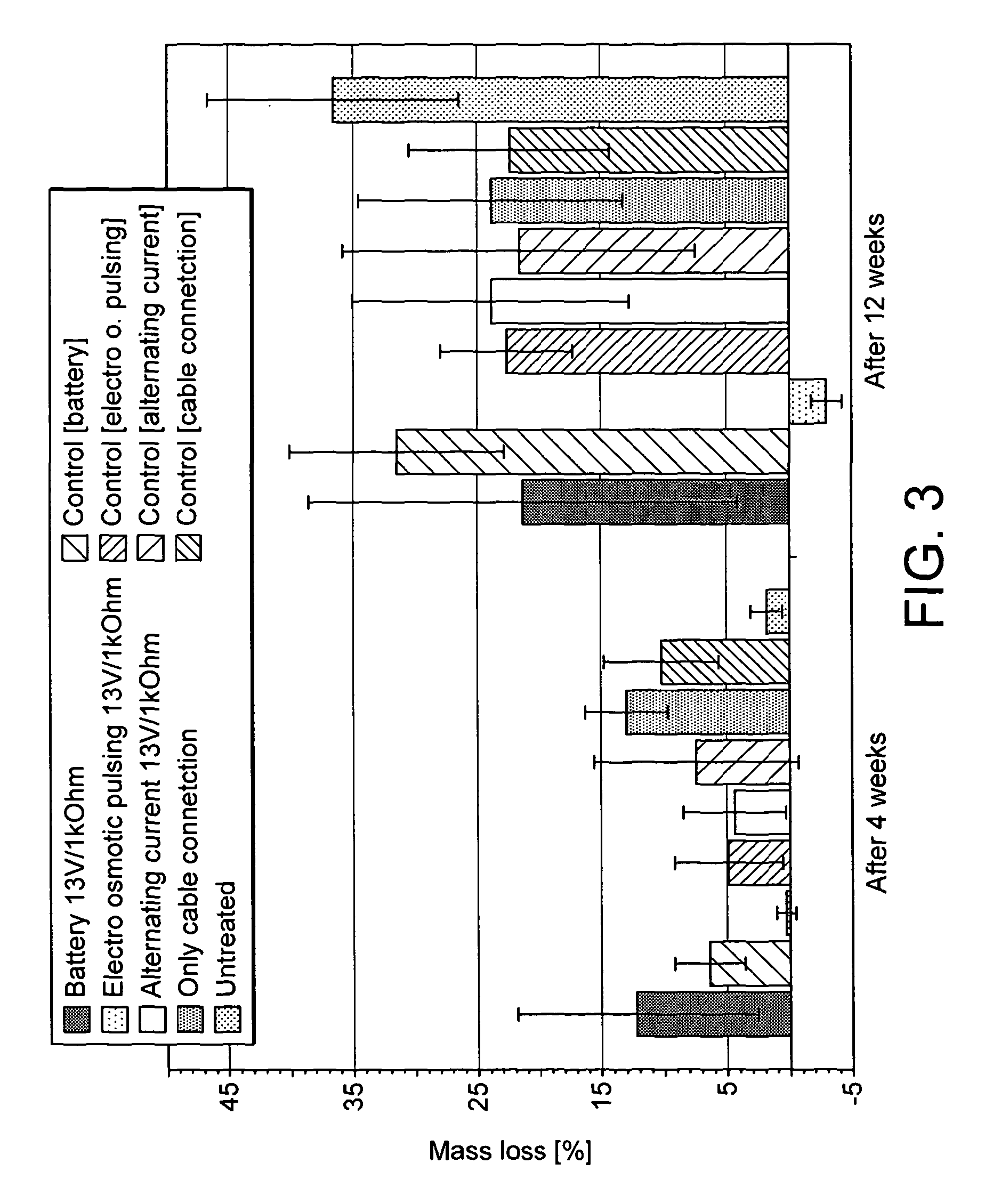Method of treatment of cellulosic objects
- Summary
- Abstract
- Description
- Claims
- Application Information
AI Technical Summary
Benefits of technology
Problems solved by technology
Method used
Image
Examples
example 1
[0033]5 mm×10 mm×30 mm samples of sapwood of Scots pine (Pinus sylvestris) were placed in Petri dishes containing a wood-destroying fungus, Coniophora puteana (brown rot fungus), and a culture medium. Certain samples were connected via 1 kΩ or 11.5 kΩ resistors to a 40V voltage DC source. The samples were incubated for 8 weeks. The weight loss was then determined and found to be negligible. For wood treated with conventional chemical preservatives under these conditions the weight loss should be less than 3%. For untreated wood under these conditions the fungally caused weight loss is much higher, reaching over 20% after 16 weeks.
example 2
[0034]Similar Scots pine sapwood samples were placed in pairs on agar in Petri dishes and exposed to Coniophora puteana (brown rot fungus) as in Example 1. Parts of the samples were removed at 4 and 12 weeks and weighed to determine weight loss as an indicator of fungal damage. In each case, the Petri dishes contained two samples separated by a barrier, with one sample being exposed to the electricity source, a 13V battery, a 13V alternating voltage and a 13V DC electroosmotic pulse source as described above. As further controls were used untreated samples and samples with electrical leads attached but with no voltage applied. The resistance in each case was about 1 kΩ. The results are shown in FIG. 3. As can clearly be seen, while all voltage application provided some protection, the protection afforded by electroosmotic pulsing was significantly superior.
PUM
| Property | Measurement | Unit |
|---|---|---|
| Time | aaaaa | aaaaa |
| Current | aaaaa | aaaaa |
| Electric potential / voltage | aaaaa | aaaaa |
Abstract
Description
Claims
Application Information
 Login to View More
Login to View More - R&D
- Intellectual Property
- Life Sciences
- Materials
- Tech Scout
- Unparalleled Data Quality
- Higher Quality Content
- 60% Fewer Hallucinations
Browse by: Latest US Patents, China's latest patents, Technical Efficacy Thesaurus, Application Domain, Technology Topic, Popular Technical Reports.
© 2025 PatSnap. All rights reserved.Legal|Privacy policy|Modern Slavery Act Transparency Statement|Sitemap|About US| Contact US: help@patsnap.com



